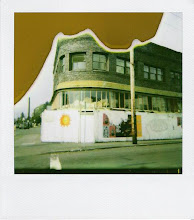Hello from the land of Sounding the Infra-ordinary!
After a bit of a hiatus during which I was busy taking care of some other business, I return with project news:
Firstly, the Conflux City collaborative soundwalk was fantastic fun and generated a whole mess of material to work with and think about.
There are plans in the works to produce a work of some sort using this material and audio and video footage recorded by Cambra Moniz-Edwards and Ryan Scott. Many thanks once again to everyone who participated on that balmy autumn afternoon!
My time in Australia was likewise very satisfying. Along with traveling to a new continent—and hemisphere—and meeting some of the friendliest people imaginable, I participated in a few events as part of the Critical Animals creative research symposium at the This Is Not Art Festival in Newcastle. One of the events that included “Sounding the Infra-ordinary” was a presentation of the project-in-process and the audience, wonderful moderator Aden, and co-presenters offered several intriguing suggestions for further developments that I anticipate exploring further as I now return to the project.
Far and away the most rewarding part of the entire trip, however, was the event “Biographical Bathing”-for which I composed a series of site-specific and trip-specific pieces to be read at the Canoe Pool. This was a new way to engage with unfamiliar territory for me, and I really enjoyed the experience of wandering around Los Angeles, Sydney, and Newcastle listening to all sorts of familiar and unfamiliar sounds. I encountered a heightened level of attending to my surroundings, to be sure, and it provided a platform for further experimentation--leading to the shortest piece yet and a strange diary of the jetlagged mind. For the event itself, I read the documentation of six listening sessions intermixed with the incredible poet Lou Smith’s work. In this way, we intended to compose a unique performative text combining both my observations as a complete outsider and her deeply intimate recollections of life growing up in Newcastle.
We read it barefoot in the sand during the setting sun at the Canoe Pool on the opening night of the festival, and it worked out beautifully and I continue to be very grateful to have been asked to participate.
I (finally) posted a few examples of the writings that compose this project to the blog. All of these pieces were read during this “Biographical Bathing” performance with Lou, and are listed here in the order that I used that evening. The TINA festival is great fun and bursting with engaging conversations about what art is and what it can do and I am very pleased that I attended. Consider this: where else could I have read Gertrude Stein’s Stanzas in Meditation aloud in a public park with a group of strangers for four hours? Not too many places…
Now that I can resume work on the project, I will post more ephemera as it develops. One upcoming event of note will be the next collaborative soundwalk, which will take place on February 20th in Gowanus, Brooklyn. This one will be part of a program I am curating with Gabrielle Hearst and Maria Papadomanolaki called “Postcards from Gowanus.” We are currently in the process of organizing several workshops to take place around the neighborhood that day, and it ought to be buzzing with creative energy.
Finally, I would like to assure this blog’s one follower (hey there!) that although universes are not ordinarily built in a day, I am working on it.











